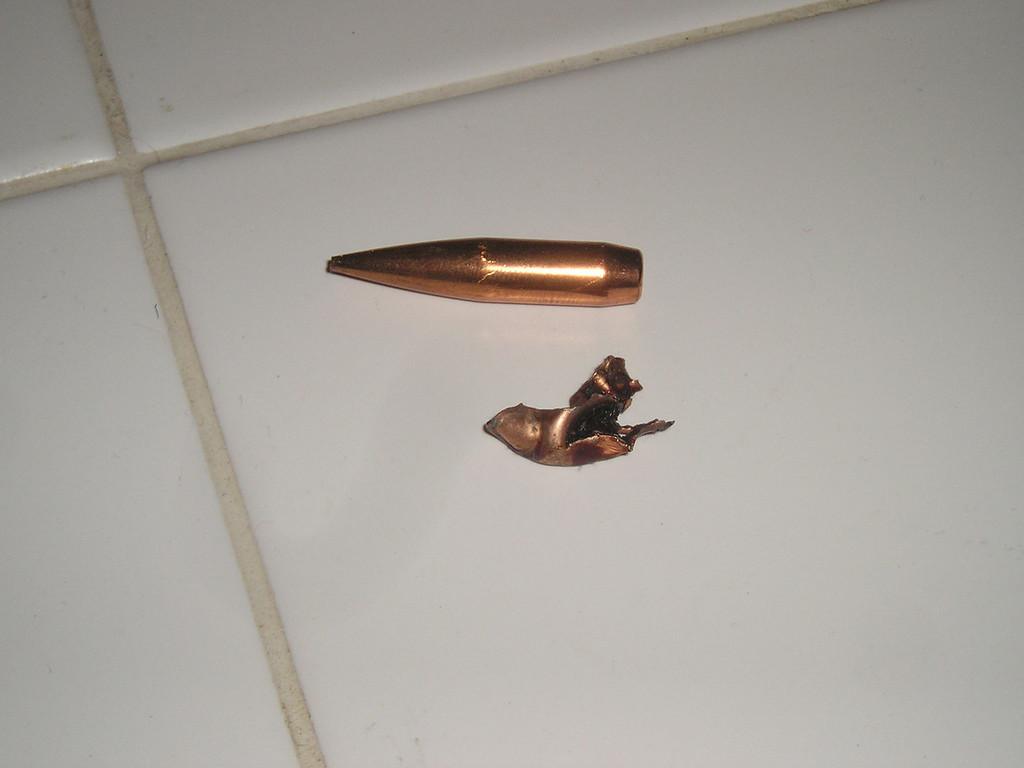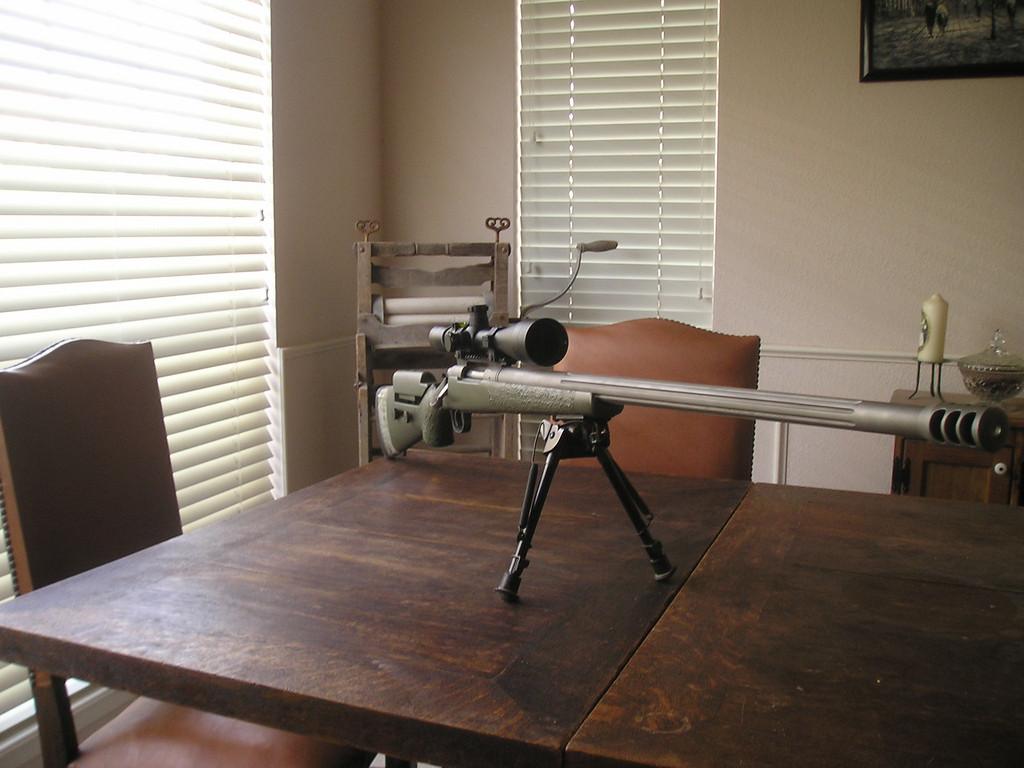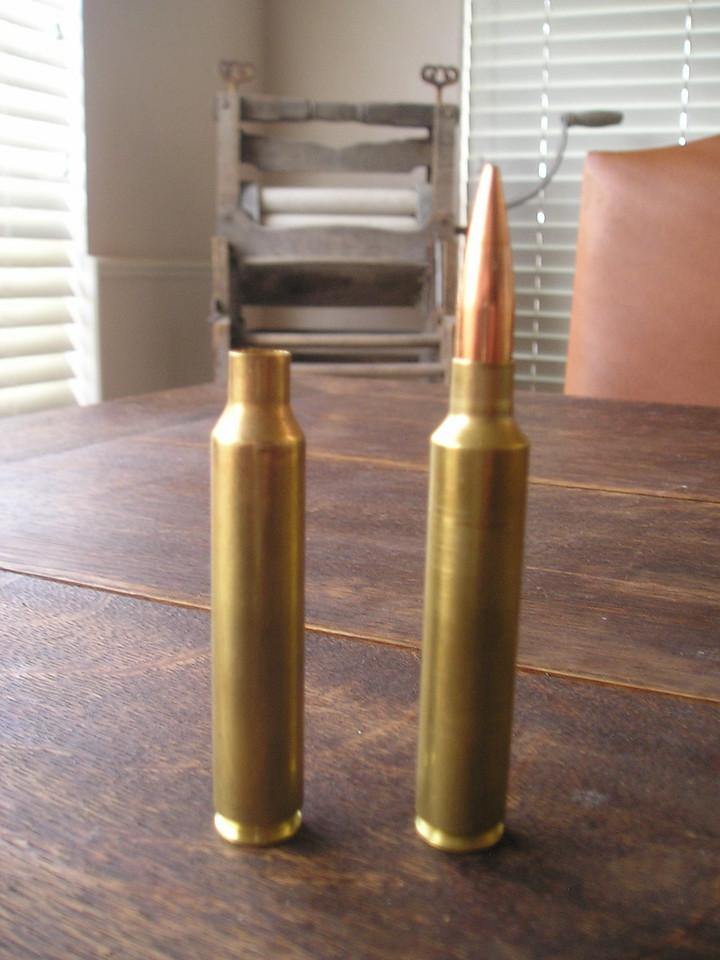Autorotate
Well-Known Member
Thought I'd share the results of yesterday's festivities with our forum members.
I was successful in drawing a NM Oryx depredation hunt that is held on Fort Bliss/WSMR. This was my first hunt that I attempted to make a dedicated effort to be able to take a "long range" shot and feel confident/ethical in doing so.
These Oryx are tough critters in my book. I've seen even with well placed shots, that these animals are still able to motivate quite a ways. I haven't heard of many DRT types shots on these.
The final kill shot was at 611 yds. Aspect was quartering towards at approx 45 degrees. You might be able to make out the entrance hole from the picture below. More forward and a bit low than I would've liked. He measured up at 34" and 34.5". Not the biggest for sure, but bigger than my previous 30.5" incher. Progress is what counts…right?

Shooting position was on top of the concrete bunker were you see the two orange hunters. The Oryx's location as to the right of the truck.

What was left of the 210 VLD as it was recovered in the heart of the animal.

Score High Gunsmithing built the rifle. It's chambered in a variant of the 300 RUMBO in that it was chambered so the neck/shoulder junction is still the SAAMI dimension, with a .003-.006 "crush fit" on virgin factory 300 RUM brass…enabling the firing of factory brass ammo in the gun. After firing, the case has. 005 of taper per inch, and a 40 degree shoulder. The reamer was originally throated for 200 NABs, but the sweet spot found during load development has a COAL of approx 3.900 with the 210 Berger. It started out as a Sendero rebarrel, and through many contortions and evolutions that Charely guided and tolerated me through, it came out as specified below-
Action-Stainless Sendero 300 RUM
Stock-McMillan HTG adj/cheek
Barrel-Shilen Match Select Standard Varmint Countour 1:10 twist 29.5" finish (8 flutes 22" long)
Trigger-Timney
Wyatt CFE-9 mag box
EGW 20 MOA base
EGW rings
Holland Radial Brake
Lightweight firing pin
Heavy weight firing pin spring
Leupold Mark 6.5x20x50 TMR
Harris 9-13 Swivel bipod
Pod loc
14.5 lbs with as spec'd above with 2 in the mag and one in the pipe.


The load I settled on:
F215GM
92 grains H-1000
3.897 COAL
210 Berger VLD
3205 fps
This load ends up giving about 4-5 firings on the brass before the primer pockets give up. The virgin brass holds about 112.2 to 112.8 (5 case average) grains of water with a fired primer seated backwards. After firing, the case holds approx 118.8-119.1 (5 case average) grains of water. I'm sure my measuring methods aren't of the scientific lab variety, but that should be enough to get you an idea. I don't know that it makes much sense to improve the 300 RUM…but it was done just to do it. I figured it would be a good opportunity to learn the process of off a dummy round to a reamer mfg, custom dies, learn about wildcatting, steep shoulder angles/feeding, etc…it was a project to learn. Here's a pic of the 300 RUM improved next to SAAMI spec case…hard to see the "improvement" but it's there.

In summary…still lots to learn, but LRH is a rewarding challenge that makes the learning worth it. Thanks for letting me share.
I was successful in drawing a NM Oryx depredation hunt that is held on Fort Bliss/WSMR. This was my first hunt that I attempted to make a dedicated effort to be able to take a "long range" shot and feel confident/ethical in doing so.
These Oryx are tough critters in my book. I've seen even with well placed shots, that these animals are still able to motivate quite a ways. I haven't heard of many DRT types shots on these.
The final kill shot was at 611 yds. Aspect was quartering towards at approx 45 degrees. You might be able to make out the entrance hole from the picture below. More forward and a bit low than I would've liked. He measured up at 34" and 34.5". Not the biggest for sure, but bigger than my previous 30.5" incher. Progress is what counts…right?

Shooting position was on top of the concrete bunker were you see the two orange hunters. The Oryx's location as to the right of the truck.

What was left of the 210 VLD as it was recovered in the heart of the animal.

Score High Gunsmithing built the rifle. It's chambered in a variant of the 300 RUMBO in that it was chambered so the neck/shoulder junction is still the SAAMI dimension, with a .003-.006 "crush fit" on virgin factory 300 RUM brass…enabling the firing of factory brass ammo in the gun. After firing, the case has. 005 of taper per inch, and a 40 degree shoulder. The reamer was originally throated for 200 NABs, but the sweet spot found during load development has a COAL of approx 3.900 with the 210 Berger. It started out as a Sendero rebarrel, and through many contortions and evolutions that Charely guided and tolerated me through, it came out as specified below-
Action-Stainless Sendero 300 RUM
Stock-McMillan HTG adj/cheek
Barrel-Shilen Match Select Standard Varmint Countour 1:10 twist 29.5" finish (8 flutes 22" long)
Trigger-Timney
Wyatt CFE-9 mag box
EGW 20 MOA base
EGW rings
Holland Radial Brake
Lightweight firing pin
Heavy weight firing pin spring
Leupold Mark 6.5x20x50 TMR
Harris 9-13 Swivel bipod
Pod loc
14.5 lbs with as spec'd above with 2 in the mag and one in the pipe.


The load I settled on:
F215GM
92 grains H-1000
3.897 COAL
210 Berger VLD
3205 fps
This load ends up giving about 4-5 firings on the brass before the primer pockets give up. The virgin brass holds about 112.2 to 112.8 (5 case average) grains of water with a fired primer seated backwards. After firing, the case holds approx 118.8-119.1 (5 case average) grains of water. I'm sure my measuring methods aren't of the scientific lab variety, but that should be enough to get you an idea. I don't know that it makes much sense to improve the 300 RUM…but it was done just to do it. I figured it would be a good opportunity to learn the process of off a dummy round to a reamer mfg, custom dies, learn about wildcatting, steep shoulder angles/feeding, etc…it was a project to learn. Here's a pic of the 300 RUM improved next to SAAMI spec case…hard to see the "improvement" but it's there.

In summary…still lots to learn, but LRH is a rewarding challenge that makes the learning worth it. Thanks for letting me share.
